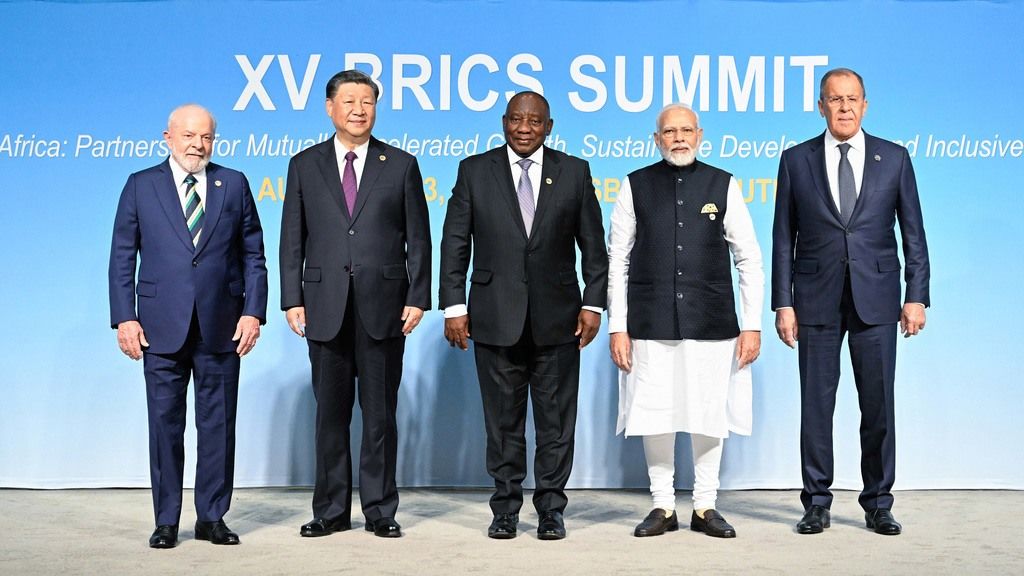
Goodbye BRICS, Hello VIIPs—Southern Asia as the New Growth Hub
Economy Politics- English
- 日本語
- 简体字
- 繁體字
- Français
- Español
- العربية
- Русский
The acronym BRIC took hold early in the twenty-first century, after Goldman Sachs economist Jim O’Neill coined the term in a 2001 report (Building Better Global Economic BRICs) spotlighting four large emerging markets—Brazil, Russia, India, and China—as future drivers of global economic growth. O’Neill noted that the four countries’ 8% share of the world economy translated into 23.3% of global GDP at purchasing power parity, and he predicted that their economic weight and impact would grow over the next 10 years. Accordingly, he argued for an organizational adjustment of the world’s economic policymaking forums, specifically, the addition of China (and possibly other BRICs) to what was then the Group of Seven.
Before long, the countries thus designated began to cohere into a semi-formal grouping. In 2009, they held their first annual summit. In 2011, that meeting was renamed the BRICS Summit after South Africa was granted membership.
From Economic Designation to Geopolitical Bloc
With fewer than 60 million inhabitants, South Africa (notwithstanding its convenient first initial) seemed somewhat out of place among a group of countries distinguished by populations well above 100 million. More recent moves to expand the group have raised further questions about its raison d’être.
At the BRICS Summit in Johannesburg this past August, the group decided to welcome six new members starting in 2024: Argentina, Egypt, Ethiopia, Iran, Saudi Arabia, and the United Arab Emirates. Five of those six represent the Middle East or Africa. Jim O’Neill, coiner of the original acronym, questioned the motives behind that selection. “Why, for example, was Indonesia not asked? Why Argentina and not Mexico, or Ethiopia and not Nigeria?” It is particularly difficult to understand the selection of Iran, a fundamentalist Shia theocracy, and Argentina, which is perennially on the brink of economic meltdown. For a group claiming to represent the Global South, it features all too many “problem children”—not least among them founding member Russia, which shocked the world with its invasion of Ukraine.
The fact is that Beijing is the driving force behind the expansion, and the selection of new members is politically motivated. The obvious aim is to build a bloc to rival the G7 and neutralize the China-containment policies of the United States and its partners.
A Shifting Center of Growth
As noted above, at the beginning of the twenty-first century, Brazil, Russia, India, and China were identified as rising economic stars with the potential to power global growth. At that time, China was still an emerging powerhouse, with a GDP only slightly higher than Italy’s.
Since then, the growth trajectories of the four countries have diverged. In 2021, O’Neill wrote that the economic performance of Brazil and Russia since 2010 had been “very disappointing,” though he remained bullish on the IC component of the acronym. Now, however, China is facing the prospect of long-term stagnation, as its real estate bubble collapses. And while it continues to rank second in the world in GDP, it gives every appearance of being caught in the middle-income trap—hardly a beacon of hope. That leaves only the I for India. What other countries can be grouped with India as rising stars?
For many years, East Asia as a whole was viewed as the global hub of economic growth, but those days are past. China, South Korea, and Taiwan (like Japan) are all confronting the structural problem of population decline. In 2022, China’s total fertility rate (the average number of children born to a female over her lifetime) was 1.09, while South Korea’s was a mere 0.78. Both figures fall far short of “replacement level fertility,” the 2.1 rate required for the population to hold steady. A region with such demographics cannot be expected to power global growth.
Meet the VIIPs
The leading candidates to take over this role are India and the Association of Southeast Asian Nations. This is the region to which so many multinationals, spooked by the China risk, are relocating their production bases. The “world’s factory” is moving house.
Based on market size, the group can be further narrowed down to the promising foursome of Vietnam, India, Indonesia, and the Philippines, all boasting populations in excess of 100 million. Might we suggest “the VIIPs” as an appropriate acronym for the next generation of economic powerhouses?
What, then, of neighboring Bangladesh? This densely populated nation—comprising some 170 million people in an area less than twice the size of Hokkaidō—has made considerable economic progress in recent years and is no longer ranked among the world’s poorest countries. Still, with lowlands occupying half of its land area, it remains vulnerable to catastrophic flooding. Given the growing risks the country faces as global warming causes sea levels to rise, it seems prudent to postpone Bangladesh’s selection.
(Originally published in Japanese. Banner photo: (From left) Brazilian President Luiz Ignacio Lula da Silva, Chinese President Xi Jinping, South African President Cyril Ramaphosa, Indian Prime Minister Narendra Modi, and Russian Foreign Minister Sergey Lavrov pose for a group photo at the BRICS Summit in Johannesburg, August 23, 2023. © Xinhua/Kyōdō.)